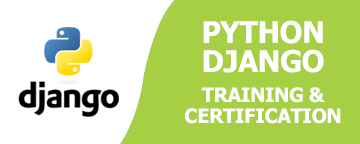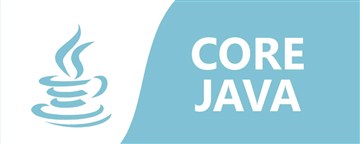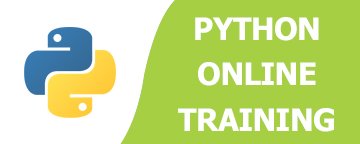About Course
Python Web Development with DJANGO
Python Django is a web framework that enables the speedy creation of efficient web pages. Known as a “batteries included” framework, Django offers built-in features like the Django Admin Interface and a default database (SQLite3). When developing a website, certain components are always required, such as user authentication (signing up, signing in, and signing out), a website management panel, forms, and file upload functionality. Django provides pre-built components that can be readily utilized for these purposes.
QA Training Hub: The Top QA Training Institute
QA Training Hub offers comprehensive online Python web development training institutes in various parts of India, including Hyderabad, Bangalore, Chennai, Mumbai, Pune, Delhi, Noida, and Gurgaon. Our training program also extends to locations in the USA, UK, and Canada.
At our institute, we provide in-depth training on all the key concepts of Python, covering both basic and advanced topics. Our training includes hands-on projects that allow you to apply your knowledge in real-world scenarios. By joining our training program, you will receive top-quality instruction and gain practical experience in Python web development.
Enhance your skills in Python and embark on a successful career in web development by enrolling in our QA best practices training. Our experienced instructors will guide you through the learning process, ensuring you have a strong foundation and the ability to work on Python web development projects confidently.
Django is a high-level Python Web framework that encourages rapid development and clean, pragmatic design. Built by experienced developers, it takes care of much of the hassle of Web development, so you can focus on writing your app without needing to reinvent the wheel. It’s free and open source.
PIG, HIVE, SQOOP, and ZOO KEEPER. These are used for the fast processing of big data. The Hadoop framework is widely used by top enterprises like Google, Yahoo and IBM. The operating systems supported by Hadoop are Windows and Linux.
Course Content
Introduction to WEB
-
What is Web?
-
Web Features?
-
W3C and W3C Members
-
Introduction to WHATWG
CORE HTML
-
Introduction
-
Parts in HTML Document
-
Version Information
-
Head Section
-
Meta Information
-
Favicons
-
Body Section
-
HTML FORMS
-
Anchors, Images
CORE JAVA SCRIPT
-
What is Script? Types of Scripts?
-
Introduction to Javascript
-
Comments and Types of Comments
-
Popup Boxes
-
Variables & Operators
-
JS Functions and Events
-
Conditional Statements
-
Looping Control Statement
CORE PYTHON
-
Introduction to Python
-
What is Python?
-
History of Python
-
Python Versions
-
Features of Python
-
How to Install Python
-
Install Python with Diff IDEs
-
Creating Your First Python Program
-
Printing to the Screen
-
Reading Keyboard Input
-
Using Command Prompt and GUI or IDE
Different Modes in PYTHON
-
Execute the Script
-
Interactive Mode
-
Script Mode
-
Python Comments
-
Working with Python in Unix/Linux/Windows/Mac/Android..!!
-
PYTHON NEW IDEs
-
PyCharm IDE
-
How to Work on PyCharm
-
PyCharm Components
-
Debugging process in PyCharm
-
SublimeText IDE
-
What is PIP?
Variables in Python
-
What is Variable?
-
Variables in Python
-
Constants in Python
-
Standard Data Types
-
Operators and Operands
-
Swap variables
-
Type Conversion
-
String Handling
Python Conditional Statements:
-
How to use “if condition” in conditional structures
-
if statement (One-Way Decisions)
-
if .. else statement (Two-way Decisions)
-
How to use “else condition”
-
if .. elif .. else statement (Multi-way)
-
When “else condition” does not work
-
How to use “elif” condition
-
How to execute conditional statement with minimal code
-
Nested IF Statement
Python LOOPS
-
How to use “While Loop”
-
How to use “For Loop”
-
How to use For Loop for set of other things besides numbers
-
Break statements in For Loop
-
Continue statement in For Loop
-
Enumerate function for For Loop
Python Lists
-
Lists are mutable
-
Getting to Lists
-
List indices
-
Traversing a list
-
List operations
-
List slices
-
List methods
-
Map, filter and reduce
Python TUPLE
-
Advantages of Tuple over List
-
Packing and Unpacking
-
Comparing tuples
-
Creating nested tuple
-
Using tuples as keys in dictionaries
-
Deleting Tuples
-
Slicing of Tuple
-
Tuple Membership Test
Python Sets
-
How to create a set?
-
Iteration Over Sets
-
Python Set Methods
-
Python Set Operations
-
Union of sets
-
Built-in Functions with Set
-
Python Frozenset
Python Dictionary
-
How to create a dictionary?
-
PYTHON HASHING?
-
Python Dictionary Methods
-
Copying dictionary
-
Updating Dictionary
-
Delete Keys from the dictionary
-
Dictionary items() Method
-
Sorting the Dictionary
-
Python Dictionary in-built Functions
Python Functions
-
What is a function?
-
How to define and call a function in Python
-
Types of Functions
-
Significance of Indentation (Space) in Python
-
How Function Return Value?
-
Types of Arguments in Functions
-
Default Arguments
-
Non-Default Arguments
-
Keyword Arguments
Non-keyword Arguments
-
Arbitrary Arguments
-
Rules to define a function in Python
-
Various Forms of Function Arguments
-
Scope and Lifetime of variables
-
Anonymous Functions/Lambda functions
-
map(), filter(), reduce() functions
-
What is a Docstring?
Adavnced PYTHON
-
Python Exception Handling
-
Python Errors
-
Common RunTime Errors in PYTHON
-
Abnormal termination
-
Chain of importance Of Exception
-
Exception Handling
-
Try … Except
-
Try .. Except .. else
-
Try … finally
Python Class & Objects
-
Introduction to OOPs Programming
-
Object Oriented Programming System
-
OOPS Principles
-
Basic concept of Object and Classes
-
Access Modifiers
-
How to define Python classes
-
Self-variable in python
-
What is Inheritance? Types of Inheritance?
-
How Inheritance works?
Python Regular Expressions
-
What is Regular Expression?
-
Regular Expression Syntax
-
Understanding Regular Expressions
-
Regular Expression Patterns
-
Literal characters
Bootstrap (Powerful mobile front-end framework)
-
What is Responsive Web Designing?
-
Typography Features
-
Bootstrap Tables, Buttons, Dropdowns, Navbars
-
Bootstrap Images
-
Bootstrap Responsive utilities
-
Bootstrap Glyph icons
Bootstrap Grid System
-
What is a Grid?
-
What is Bootstrap Grid System?
-
MOBILE FIRST STRATEGY
-
Working of Bootstrap Grid System
-
Media Queries
Grid options
-
Responsive column resets
-
Offset columns
-
Nested columns
DJANGO WEB FRAMEWORK:
-
What is a Framework
-
Introduction to Django
-
Django – Design Philosophies
-
History of Django
-
Why Django and Features
-
Environment setup
-
Web Server
MVC Pattern
-
MVC Architecture Vs MVT Architecture
-
DJANGO MVC – MVT Pattern
Getting Started with Django:
-
Creating the first Project
-
Integrating the Project to sublime text
-
The Project Structure
-
Running the server
-
Solving the issues and Migrations
-
Database Setup
-
Setting Up Your Project
-
Setting Up Your Project
Create an Application
-
What Django Follows
-
Structure of django framework
-
Model Layer
-
What are models
-
Model fields
-
Querysets
Django – Admin Interface
-
Starting the Admin Interface
-
Migrations
Views layer
-
Simple View
-
Basic view(displaying hello world)
-
Functional views, class based views
Django – URL Mapping
-
Organizing Your URLs
-
Role of urls in Djnago
-
Working urls
-
Forms
-
Sending Parameters to Views
-
Templates layer
-
The Render Function
Django Template Language (DTL)
-
Role of template layer in django
-
Filters,Tags, Tag if, Tag for, Block and Extend Tags
-
Comment Tag, Usage of templates
-
Extending base template
Django – Models
-
Creating a Model
-
Manipulating Data (CRUD)
-
Linking Models
-
Django – Page Redirection
Django – Sending E-mails
-
Sending a Simple E-mail
-
Sending Multiple Mails with send_mass_mail
-
Sending HTML E-mail
-
Sending HTML E-mail with Attachments
Django – Form Processing
-
Using Form in a View
-
Usage of forms
-
Crud operations using forms
-
Crispy forms in django
-
Django – File Uploading
-
Uploading an Image
-
Django – Apache Setup
-
Django – Cookies Handling
-
Django – Sessions
-
Django – Comments
Django admin
-
Creating super user
-
Using admin in Django
-
Adding models to admin
-
Adding model objects using admin
-
Displaying in cmd using querysets
Static files
-
Loading css files into templates
-
Loading js files into templates
-
Uploading image using





